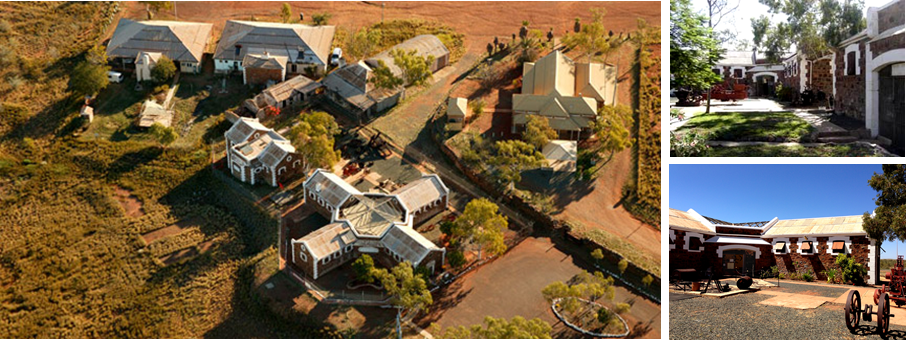
The Roebourne Old Gaol is an iconic attraction providing an insight into the history of Western Australia’s West Pilbara Coast and the town of Roebourne, and is now home to a Museum, the Roebourne Visitor Centre and the Roebourne Arts and Crafts Group.
Situated in the Law and Order Precinct on Queen Street, Roebourne Old Gaol played a fascinating role in WA’s history and even though was constructed to only accommodate 14 prisoners, often housed up to 40. The cell blocks of the Old Gaol were built in 1896, and it is most likely that a team of prisoners and local Indigenous people was utilised to gather and quarry the stone. It stands as a reminder of the harsh times that were endured throughout the colonial era.
In 1884 the Roebourne lock up was proclaimed a Gaol. In 1887 it was decided that the original small wooden cells were dangerous and they were replaced by four new stone cells. These cells featured an iron ring in the centre of the floor so prisoners could be manacled for extra security. The ruins of the original stone cells can be viewed at the rear of the complex. In 1896 the present building was constructed. It was designed in the decorative mode of the 1890s in the style associated with George Temple Poole. Building plans show that the cells were denominated by the skin colour of the expected prisoner population. The larger four cells, radiating from an octagonal courtyard were for Aboriginal prisoners, with separate cells for European, Asian and female prisoners.
In 1924 the Gaol was closed due to the demise of the Cossack port and the subsequent decline in the population of the Roebourne area. The Gaol was refurbished and reopened as a prison in 1975 and operated until 1984, when prisoners were transferred to the new Roebourne Regional Prison. As you wander through the complex take your time to reflect on the prisoners who lived within these walls. In the Museum you will gain a glimpse of what life was like for Aboriginal Australians after white settlement, as well as an insight into the experiences of European and Asian settlers to the region.



